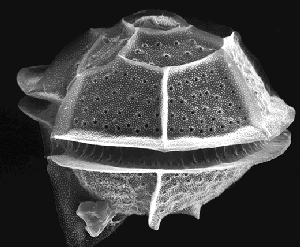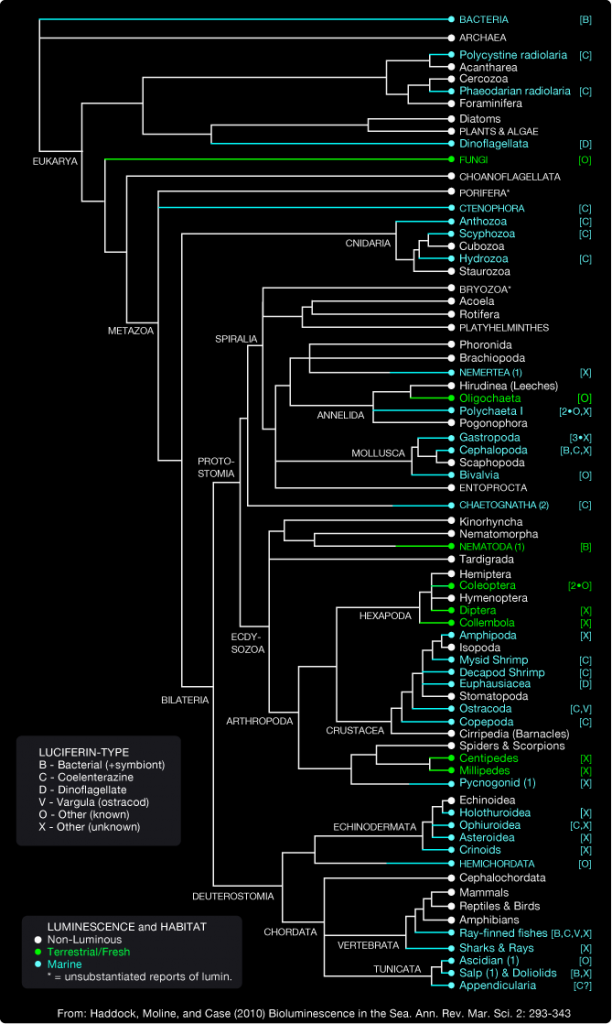I was born and grew up in Puerto Rico. An island full of natural wonders, and we happen to have some “bio bays”. Saltwater bays surrounded almost completely by mangrove plants. They (the mangrove) create a magnificent ecosystem inside the water. A good example is Vieques’ BIO-Bay. This unique bay contains up to 720,000 single-celled bioluminescent dinoflagellates per gallon of water. These half-plant, half-animal organisms emit a flash of bluish light when agitated at night. The high concentration of these creatures (Pyrodimium bahanense) can create enough light to read a book from.

Eighty percent of all known bioluminescent groups inhabit the world’s oceans. At certain depths, nearly all organisms glow. On land, things are quite different. There are bioluminescent fungi and insects, but no flowering plants, birds, reptiles, amphibians, or mammals that glow.
How did bioluminescence evolve? Scientists are still working on this question. Bioluminescence is the visible creation of light by an organism through a biochemical reaction. It is produced by the sudden transformation of a high-energy molecule into a lower state of energy. The difference in these energy levels is emitted as one photon of light. Luciferin and its enzyme Luciferase are the only compounds it produces of interest for its bioluminescence properties. The reduction reaction luciferase has on luciferin uses oxygen to produce the glow. The exact process of how mechanical stimulation can causes Pyrodinium bahamense (as well as other bioluminescent dinoflagellates) to glow is still unknown. Once known, this could have potential use in research and other applications. The reaction is highly efficient, turning 98% of its energy into light, and only loosing 2% as heat. Both luciferin and luciferase are generic terms rather than the names of certain chemicals, meaning that lots of different substances can lead to the reaction and it is estimated that bioluminescence has independently evolved at least 40 to 50 times among existing organisms.
This reaction is what gets me interested in them, besides other animals or bacteria for instance. These dinoflagellates that produce bright blue light when stimulated by movement. How can subtle human manipulations can use these reactions as actuators of light and even as natural sensors of movement and vibrations? I know somehow how they react because I swam in the bays many times. Now, what kind of interactive behaviors and applications can they bring in terms of experimentation of human-nature interaction? Thats what I want to find out. First I have to find them or grow them… 